Veteran Barrens herpers call them “trash snakes.” They complain about them taking up space under boards. They don’t even bother photographing them. If they go out on a beautiful day and find “nothing” but racers or ringneck snakes, they’ll even say they got skunked!
As you can tell, I am outraged by the discrimination against these beautiful serpents. I am quite happy to find them, even if they are more common than the corn snakes and timber rattlers, kind of like how a pretty fowlers toad (Bufo fowleri) can brighten my day, even though I find them on almost every trip.
On Saturday (September 9th) Scott and I headed to the Pine Barrens really early. Scott asked me when he should come by and pick me up, and I said 5am. He called my bluff (this is the problem with an emergency medicine intern as a herping buddy; to him there is no such thing as a ridiculous time to be awake), and so was there bright and early (actually dark and early – the sun didn’t wake up for another hour and a half) to pick me up and head out to South Jersey.
We wandered the sand roads, mostly of Gloucester and Burlington Counties, flipping trash and logs, and actually spending a lot of time rearranging the trash that locals have dumped in disorganized heaps in the Wildlife Management Areas and other patches of forest.
I know, trash does not belong in the forest at all, but if it’s going to be there, it might as well be spread out in such away as to provide the best cover for reptiles and amphibians. Our goal is that the next time we wander across those same spots, we have more-productive piles of trash to search.
We did find some snakes under the boards and other debris we turned over, namely the racers, one ringneck snake, and a worm snake (Carphophis amoenus). I know, I did not defend the worm snake in my introduction to this post, but while I do enjoy finding them, I just don’t think they’re all that beautiful.
Is this a double standard? I don’t think so. What galls me about the prevailing derisive attitude towards racers and ringnecks is that I think they are beautiful snakes that are not valued because they are common, whereas I don’t think anyone would think the worm snake was beautiful even if it were rare.
Take the rough earth snake (Virginia v. valeriae), a small, drab, rarely found species that occurs throughout New Jersey. Anyone would be interested to find one, but no one would frame the photos. The coastal plains variation of the milk snake (Lampropeltis triangulum “temporalis”), by contrast, is rarely encountered but gorgeous, with bright red saddles on a cream background, and herpers justifiably ooh and ah when they find one. My beef is with the herpers who don’t ooh and ah when they find a ringneck snake or a racer.
Here, judge for yourself. The ringnecks in the Pine Barrens are a mix (or “intergrade”) of two subspecies, the northern (Diadophis p. edwardsii) and the southern (Diadophis p. punctatus). Northern ringnecks usually have blank yellow bellies and a full ring around the neck. Southern ringnecks usually have a row of half-moon spots down the belly and their ring is usually broken by dark scales midway across the neck. This one has both the spots and the full ring, as have the others I’ve found in the Barrens.

This picture came out blurry, but I thought it was adorable how it was trying to bite Scott.
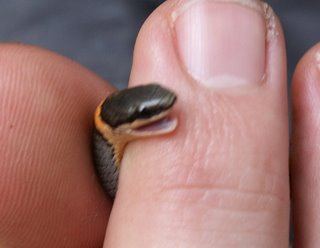
Here’s the post under which we found it.

Here’s the prettiest of the racers along with the piece of metal sheeting under which we found it. Look at that big, liquid eye and the deep, powdery black body color set off by the white chin.
I’ll point out that this one was cold to the touch, and for that reason was pretty easy to handle. Racers are strongly defensive snakes, and, though not venomous, will usually do their best to chew your face and hands off when you catch them. This one posed without any blood loss and then chose an escape path that ran under Scott.

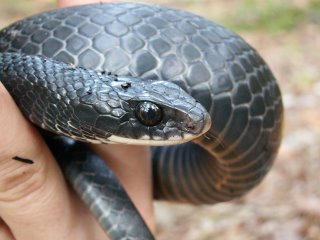
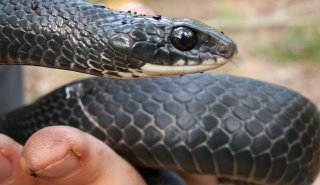

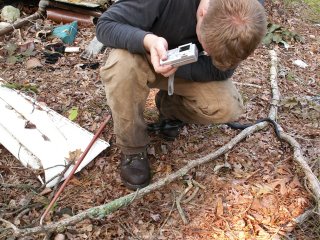
Here’s another racer we found. This one was preparing to shed, hence the milky eyes and gray color. When snakes get ready to shed their skin, they secrete a milky fluid between the old layer of skin and the new layer. During this period they are referred to as being “in shed,” or “opaque,” a reference to their eyes being obscured by that fluid.

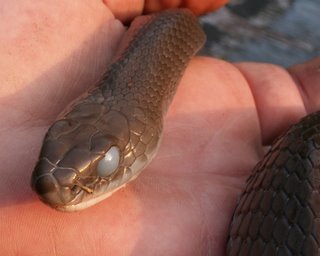
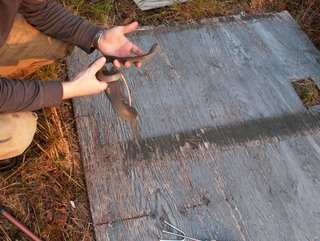
The worm snake was also in shed.
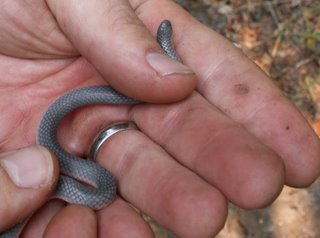
Last, here’s a little fence lizard (Sceloporus undulatus hyacinthinus) that we found under some wooden shipping pallets.
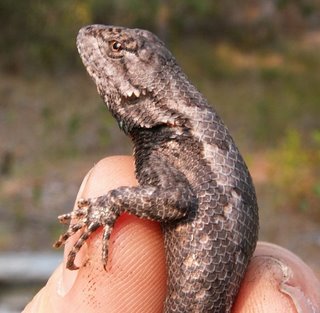
When we tried to put it down, it did not want to let go of Scott’s finger.
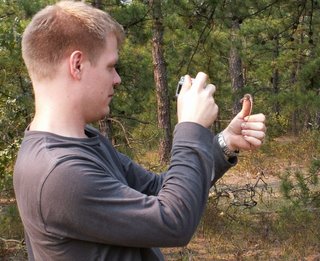
The weather started off humid and in the low 60s and rose well into the 70s as the sun came out.
Totals:
2 black racers
1 ringneck snake
1 worm snake
1 fence lizard
1 DOR painted turtle (Chrysemys p. picta)
No comments:
Post a Comment